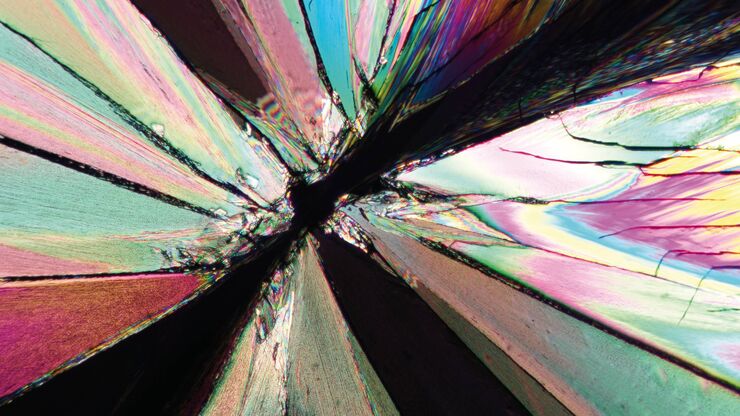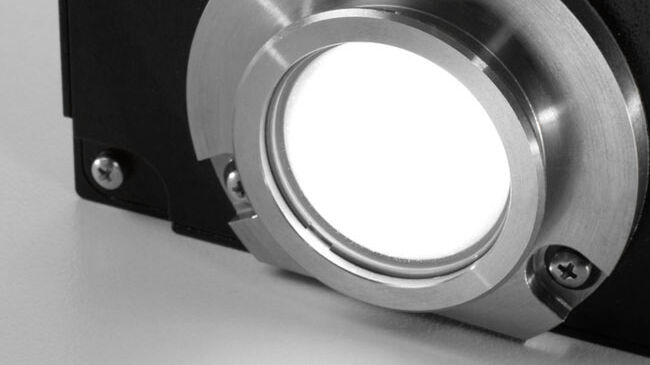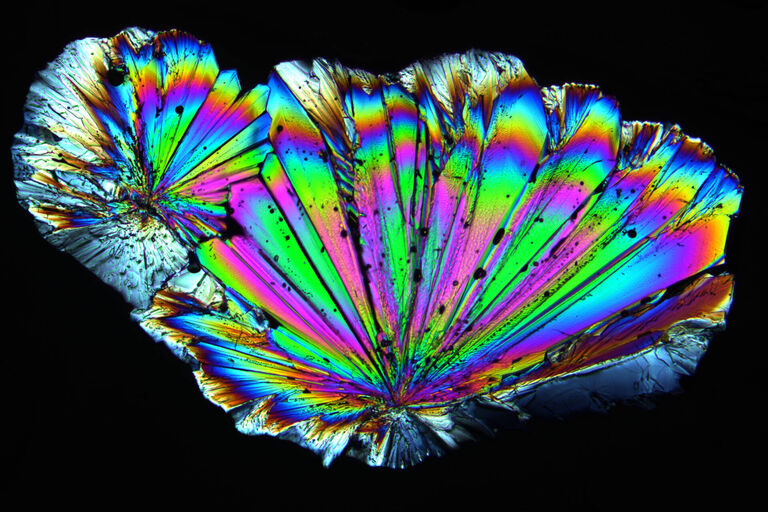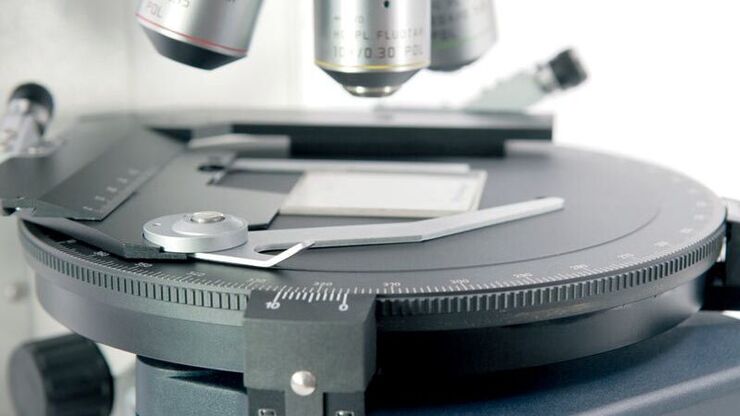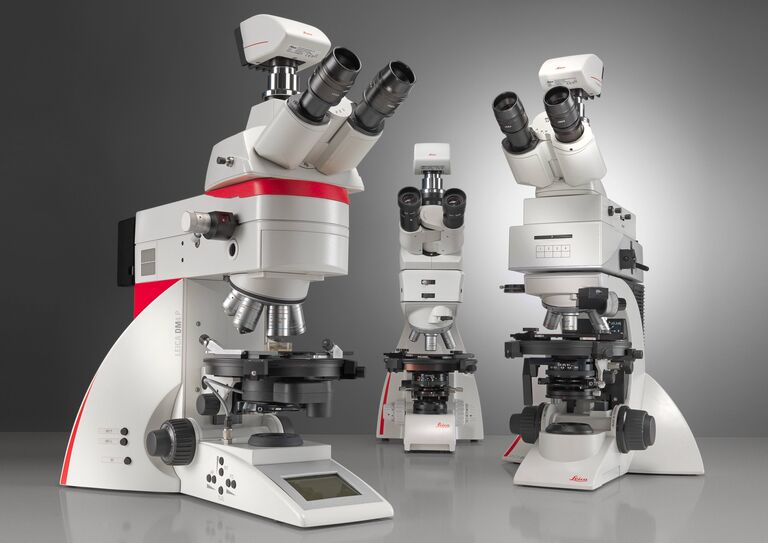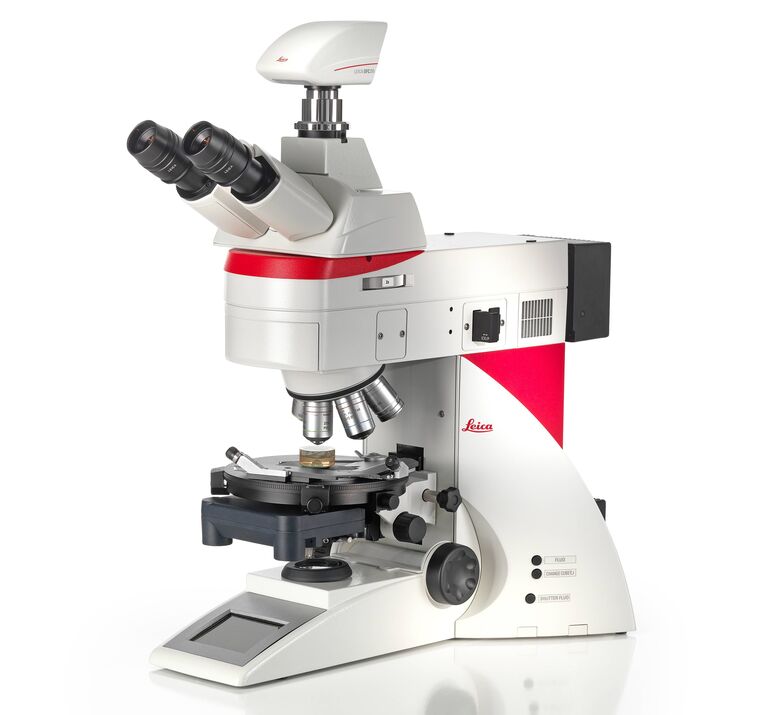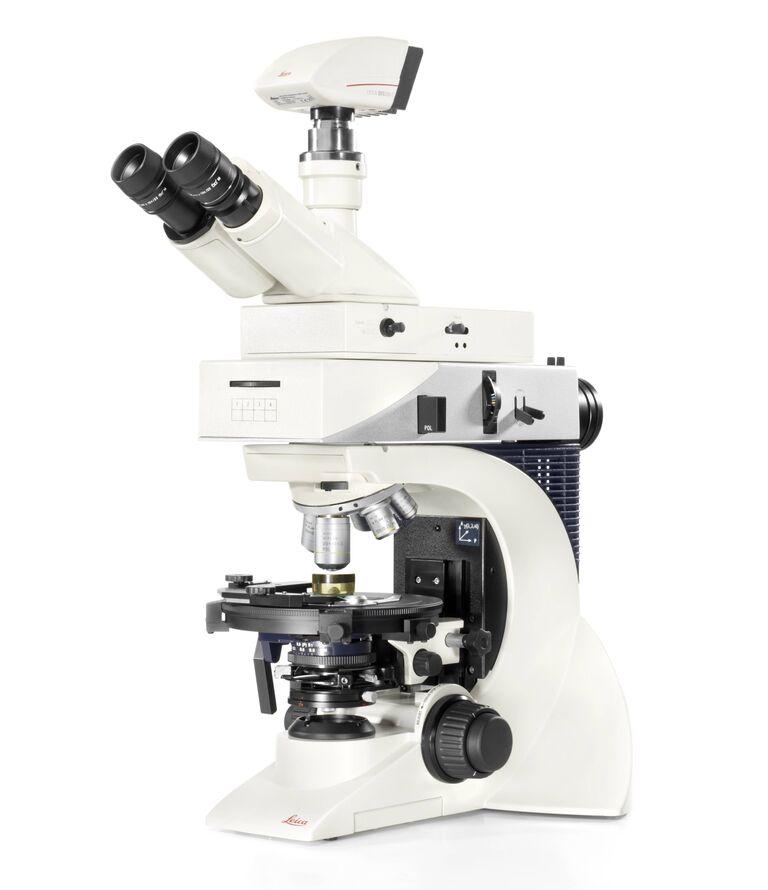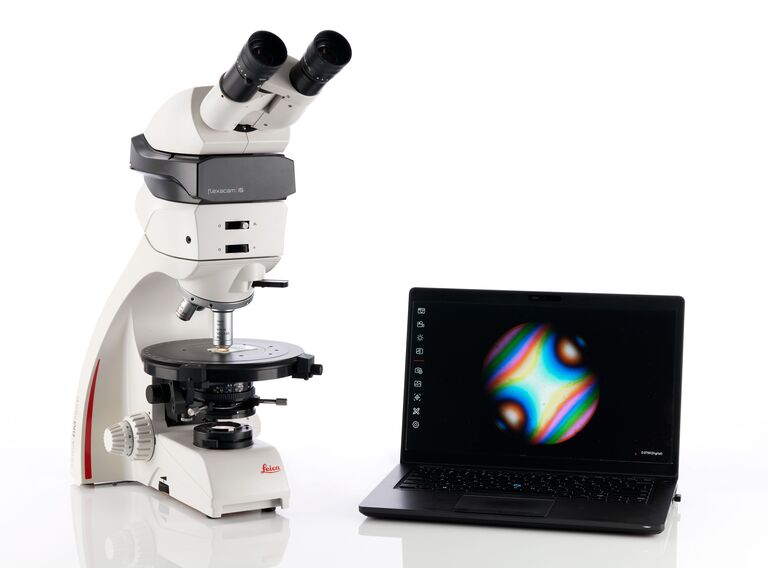DM4 P, DM2700 P & DM750 P Polarization Microscopes
If you would like to investigate crystalline structures, polarization microscopy will serve you best. Whether it be minerals, plastics and polymers, drugs and pharmaceuticals, or pigments and cement, with our polarization microscopes you will see what interests you most as a researcher or in quality assurance.
Get Optimal Results
You need a few components to get what you aim for in polarization. These are the most important:
- Strain-free optics, because you need to be sure that the observed birefringence results from the sample and not from the optics
- LED illumination is crucial, because it lights the samples homogenously and at a constant color temperature
- Polarizers will make birefringence visible and a rotatable stage enables you to align the sample and optical axis
- You need a Bertrand lens for conoscopic observation of the optical axis and compensators for measurement tasks
Learn more about polarization microscopy on Science Lab.
There will be Light!
LED illumination saves you money in many ways: It consumes less energy than halogen illumination, and does not need to be replaced, causing downtime of your instrument, because it has a lifetime of up to 25,000 hours. Further advantages:
- LED lights your samples homogeneously and at a constant color temperature, providing you with a realistic impression of your sample
- LED adjusts light intensity fast so you can work smoothly
- LED requires no daylight filter since the LED already provides constant light temperature of 4500 K
- LED produces little heat, and therefore does not need a cooling fan
- LED lets you work undisturbed, because no cooling fan makes a noise around you
Best of Both Illuminations
You can configure the Leica DM4 P with LED illumination either for transmitted light or incident light or with LED for both transmitted light an incident light in one go.
- Incident light is mandatory for all who perform reflectivity measurements, for example looking at ores or coal.
- Transmitted light is required for birefringence measurements, for example in inspection of geological thin sections, polymer foils, or drugs.
- For specific applications such as in geological research, both are necessary.
When the microscope is equipped for both incident and transmitted light, the associated objective, that is with or without cover glass correction, should be used from magnification >10x.
Get your Nosepiece Around it!
Get different sample information from different magnifications of the 6-objective nosepiece.
- Use a 2.5x overview objective to identify macro structures in your sample
- Change to 63x magnification for detailed investigations of optical properties by means of conoscopy
- Switch to 100x to inspect phase reactions along grain boundaries
By the way: The nosepiece is also coded, so that it supports you intelligently.
Investigate Optical Properties
Conoscopy is used to investigate interference figures. Their shape and the modifcation achieved by compensators yields information about the optical properties of the investigated material. You can determine the number of optical axis, the angle(s) of optical axis and the optical character of the material.

Uni-axial interference figure of thick calcite plate, perpendicular to optical axis
Bi-axial interference figure of thin biotite crystal in diagonal position at circular polarized light. Position of optical axis can be clearly identified
The Leica DM4 P is ideally suited to conoscopy
- Strain-free objectives with high magnification and high numerical aperture are a must for this application.
- Use special 63x Leica objectives that fulfill the highest requirements of polarization class 5 to obtain optimal results.
Images recorded with a DM4 P microscope using transmitted light, conoscopy, 63x N Plan objective, and polarizers


Three different systems for polarization microscopy
Your choice: Leica DM4 P
Flexible according to your tasks, safe and easy in operation through coded functionalities for research, inexperienced operators, or multiple-user environments
- Coded 6-fold centerable nosepiece
- Illumination and contrast management for reproducible results
- Coded conoscopy with 1.6x magnification changer
- LED illumination
- Status display
- 360° rotating stage with and without 45°click stop
- Strain-free optics
- Broad range of polarization equipment
- Fixed and variable compensators according to DIN 58879
Your choice: Leica DM2700 P
The robust stand and intuitive functionality are the keys to successfully fulfill routine and advanced task on a daily basis.
- High modularity
- UC-3D illumination
- Color-coded diaphragm assistant
- 5-fold centerable nosepiece
- 2- or 3-gear focus drive
- Upper focus stop
- LED illumination
- Broad range of conoscopy modules
- Strain-free optics
- 360° rotating stage with and without 45°click stop
- Broad range of polarization equipment
- Fixed and variable compensators according to DIN 58879
Your choice: Leica DM750 P
It’s practical, flexible, robust and makes learning fun!
- Integrated handle and cord wrap for easy storage
- Integrated storage positions for 2 compensators and objective centering tools for easy access
- Large 178-mm rotating stage for easy viewing of the stage markings
- Laser-engraved stage markings for long-time use
- 4 individually centerable objective positions for rotating the specimen on center
Completely at Your Service: Leica DM4 P
If you want to do everything in polarization microscopy, you can with the Leica DM4 P.
Store and recall information with coded components
- When you change objectives, illumination intensity and aperture settings are recalled with the Illumination Intensity Control and Contrast Manager.
- Acquired images are always calibrated due to the coded nosepiece.
Identify interesting structures
- With the large 25-mm field of view you get a perfect overview.
- A lower magnification rather than the detailed view often reveals the specific information you need - just think of flow or deformation structures or zonation by cooling processes.
Great Flexibility: Leica DM2700 P
If you do not need full automation and maximum reproducibility, the Leica DM2700 P is your instrument of choice. Apart from the automation, it offers a flexibility which is similar to the Leica DM4 P.
- Get distinct sample information with 5 objectives on the 5-fold centerable objective revolver
- Get large overviews from the 22-mm field of view
- Obtain a better contrast with UC-3D illumination at incident light observation
The Champion in Education: Leica DM750 P
In education you need a robust tool that students can use every day. You can easily plug and play it – that’s what we call best preconditions for successful learning.
- Get into the details of your samples with 4 objectives
- Use the 20-mm field of view for a good overview
- Enjoy the practical details the instrument offers: You can carry it by its handle and stow away its cable inside the instrument

